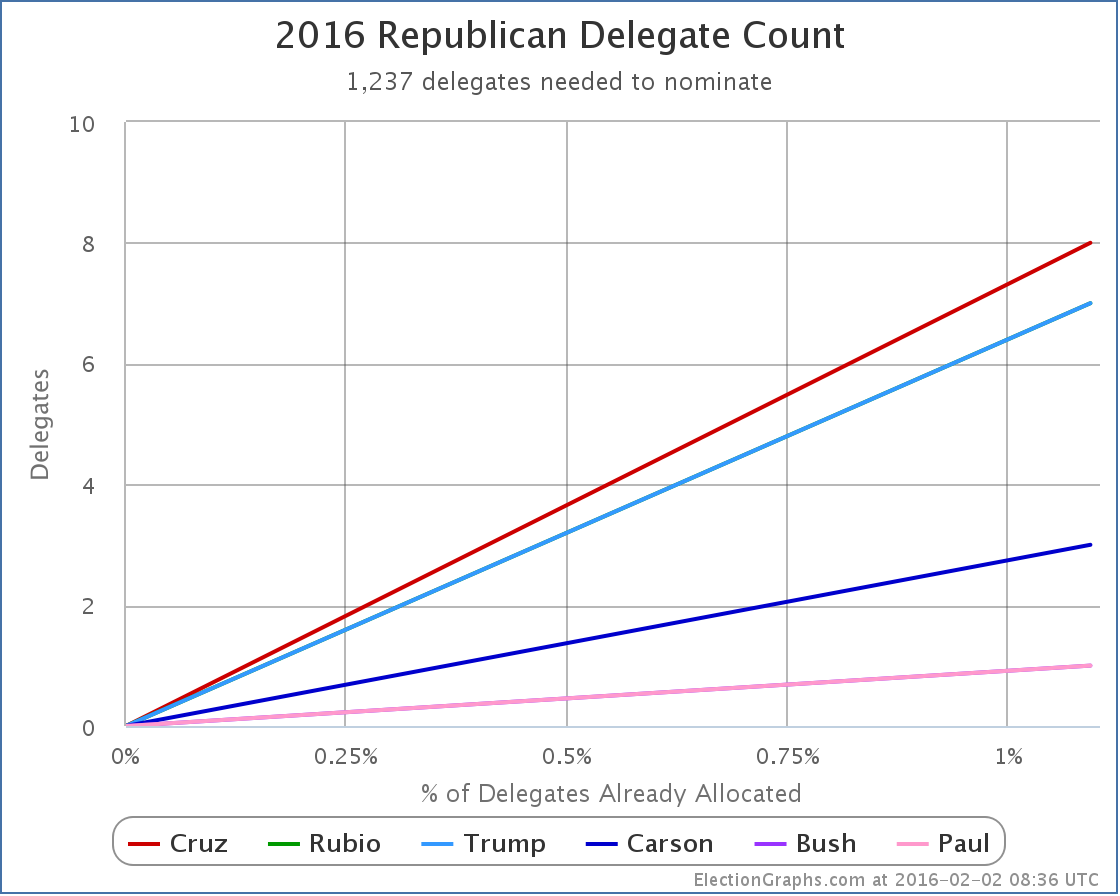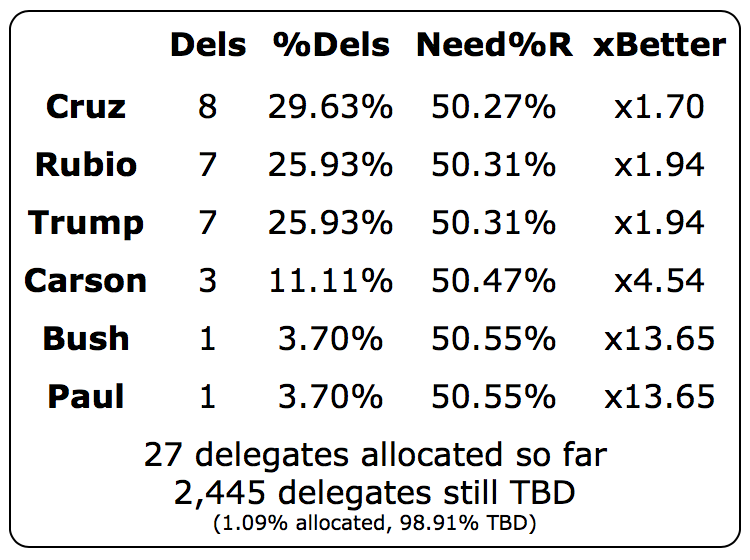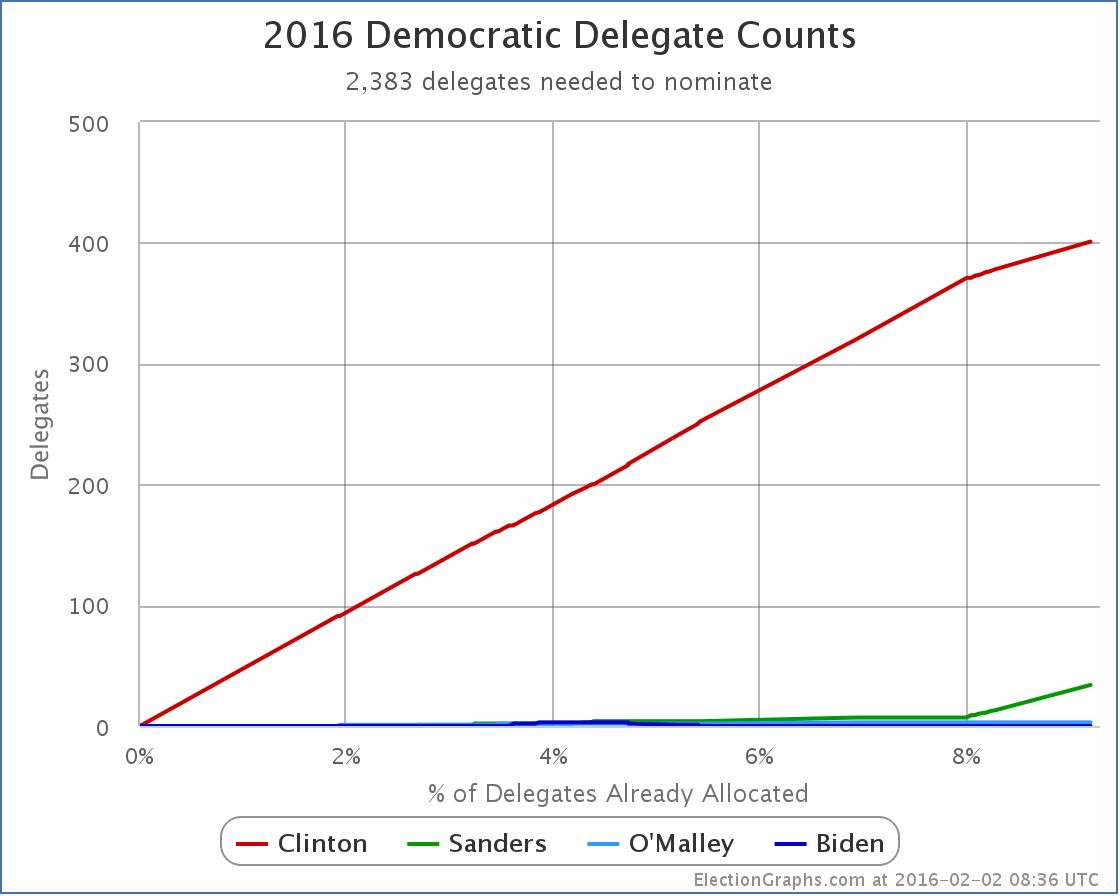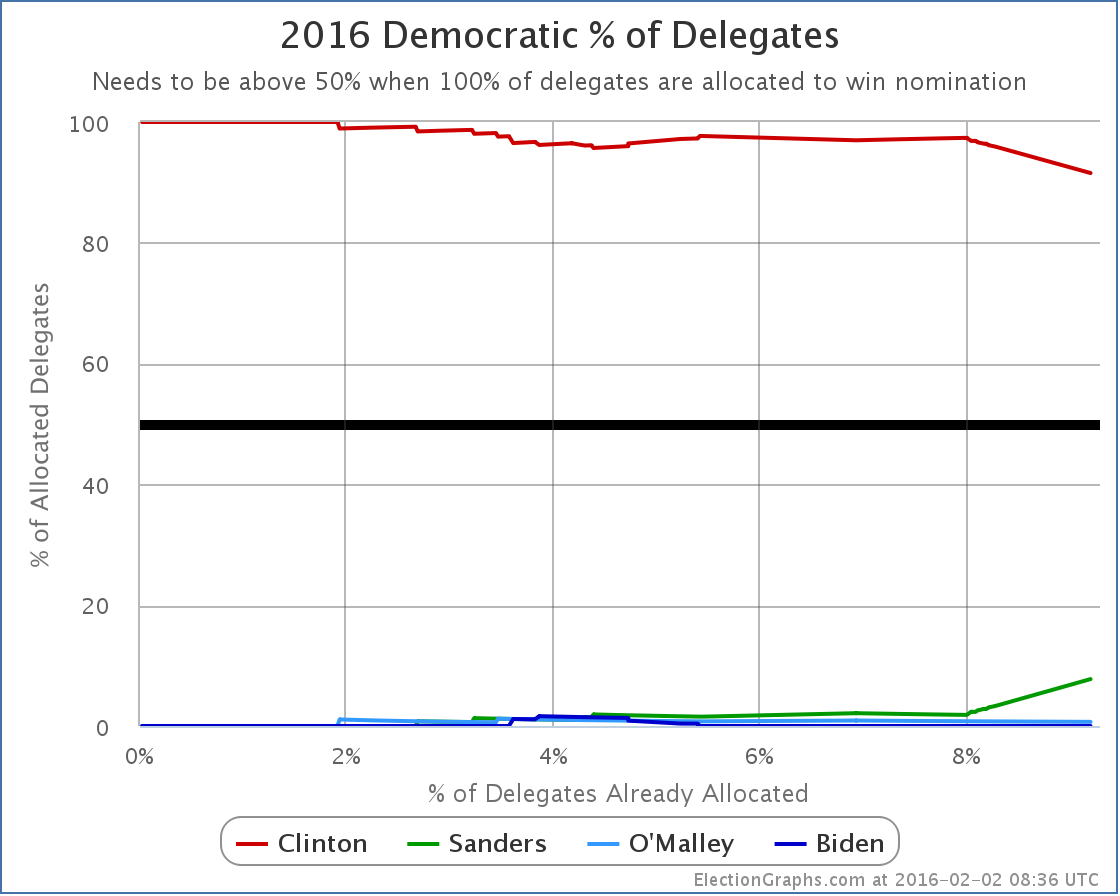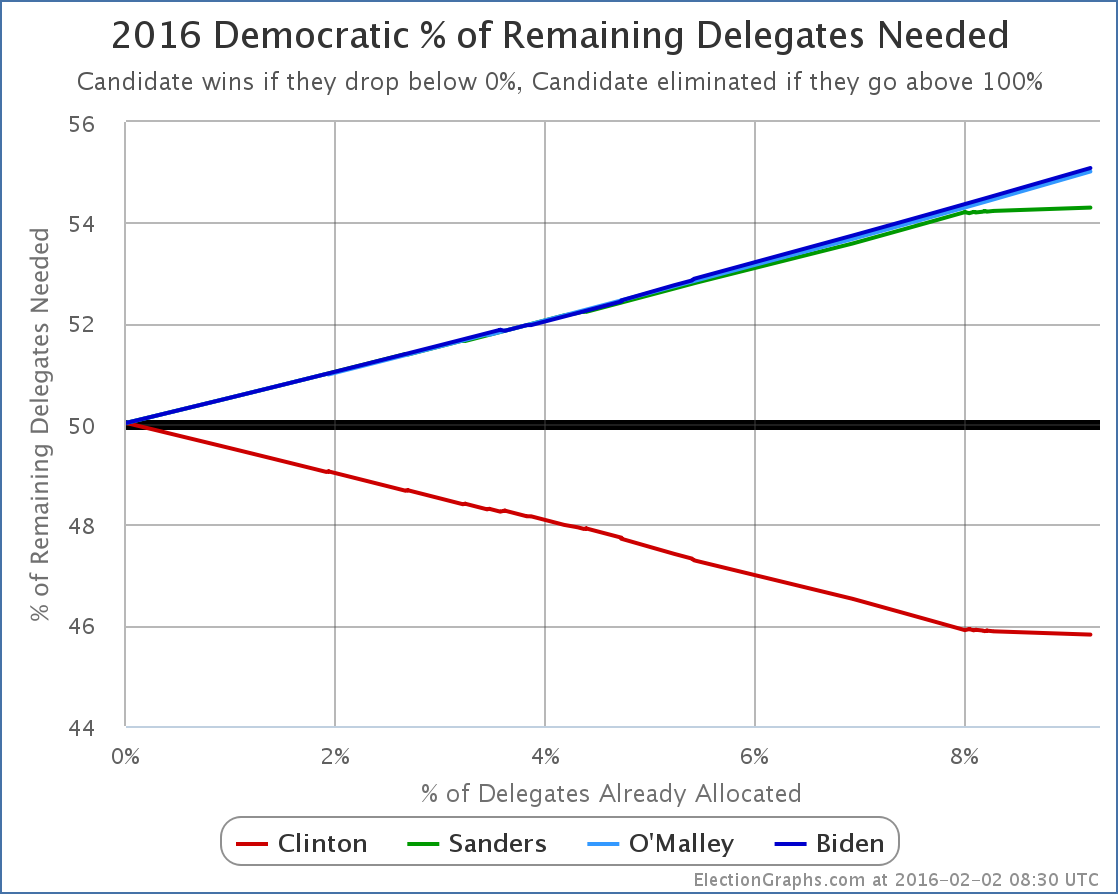Unlike the Democrats, the Republicans didn’t have years of superdelegates endorsing one candidate or another, so Iowa really was a clean slate. The very first delegates earned in the race for the 2016 Republican nomination. The headlines are of course that Trump underperformed the poll-based expectations letting Cruz slide to a win, while Rubio outperformed his expectations, coming in a close third. This is all true.
But it is also true that only a tiny fraction of the delegates have been allocated so far. None of the candidates got a majority in Iowa either. So nobody is actually yet on a track to overall victory. Cruz may be slightly ahead, but Trump and Rubio are right at his heels. Cruz is not in a dominating position. It really is a three person race.
Looking at the raw delegate graph quickly…
…you immediately notice that we just have a really boring graph with a few straight lines. And Rubio’s line and Trump’s line completely overlap too. As do Bush and Paul’s lines. That’s because this is our first real data point after everyone was just at zero.
All of the graphs are like this. So just this once, lets skip the graphs and look at the summary table instead:
I’ll note here that Green Papers has slightly different numbers. But the New York Times, Washington Post, and CNN all agree with the estimates above, so for the moment that is what we’ll go with here.
It is clear that Cruz/Rubio/Trump are in a separate class here than Carson/Bush/Paul. But even these three would need to nearly double their performance to actually be on a track to win, because, well, you have to be getting more than half of the delegates to win outright. 25% to 30% won’t get you there. So at some point, somebody has to start going over the 50% mark if there is going to be a winner.
There is plenty of time for that of course. Nobody is predicting a contested convention quite yet, as much fun as that would be.
We probably won’t see anyone over 50% after New Hampshire either, but how close we get may depend on the viability thresholds. In New Hampshire on the Republican side you need to get 10% of the popular vote to be eligible for delegates. Although this will definitely change in response to the Iowa results, at the moment RCP has Trump at 33.2%, Cruz at 11.5%, Kasich at 11.5%, Bush at 10.3%, and Rubio at 9.5%. The rest are pretty far from 10%. But that is four candidates all within a couple percent of 10%.
Depending on which of those ends up right above or right below the 10% threshold, you could see very different delegate results coming out of New Hampshire. Most likely, we’ll have three or four candidates over 10% and a mix of delegates, but in the extreme case, if all but Trump drops under 10%, then Trump gets all the delegates. So a wide range of things is possible based on really small movements from the current positions in the polls.
Final points here though to the people saying Iowa proves that Trump is done…
- Trump was pretty close in Iowa. A one delegate difference means almost nothing.
- Although the Iowa results may diminish it, Trump starts with a big lead in New Hampshire.
- Only 1.09% of the Republican delegates have been determined so far.
We have a three way race right now. It is not inconceivable that a 4th candidate could do well enough in New Hampshire to join that group. Things are just as up in the air and chaotic on the Republican side as they were before Iowa. Anything could still happen.
Stay tuned.
Note: This post is an update based on the data on ElectionGraphs.com. Election Graphs tracks both a poll based estimate of the Electoral College and a numbers based look at the Delegate Races. All of the charts and graphs seen in this post are from that site. Additional graphs, charts and raw data can be found there. All charts above are clickable to go to the current version of the detail page the chart is from, which may contain more up to date information than the snapshots on this page, which were current as of the time of this post. Follow @ElectionGraphs on Twitter or like Election Graphs on Facebook to see announcements of updates or to join the conversation. For those interested in individual general election poll updates, follow @ElecCollPolls on Twitter for all the polls as they are added.
